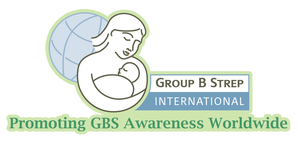Streptococcus agalactiae ST283 causing invasive sepsis in healthy adults is widespread in SE Asia9/30/2018
Presented by Timothy Barkham, MBBS MSc FRCPathMeasurable Learning Objectives: At the conclusion of this presentation, participants should be able to… 1. Discuss that GBS can be foodborne 2. Explain that a specific strain, ST283, is causing widespread adult human sepsis in SE Asia ABOUT THE PRESENTER:  Timothy Barkham, MBBS MSc FRCPath Dr. Barkham studied medicine and then specialised as a Microbiologist at St. Thomas' Hospital in London, UK. He worked at the Hammersmith Hospitals for 2 years before moving to Singapore in 1999. He enjoys clinical infectious diseases, epidemiology and outbreak investigation. He has a 20% teaching appointment at the National University of Singapore. He has developed diagnostic assays that are marketed in Singapore and elsewhere in Asia. He showed that ST283 was the cause of the outbreak in Singapore in 2015, and, with colleagues, pursued it’s epidemiology across Asia.
Timothy Barkham
10/15/2018 09:48:11 pm
Although this description, of human GBS ST283 associated with fish consumption, has only been reported in SE Asia, we wonder whether the necessary combination (of fish contaminated with an aggressive strain and habitual consumption of raw fish) might be present in other continents, meaning that humans might be being affected elsewhere.
Marti Perhach
10/16/2018 10:00:00 am
GBSI would be glad to start a web page on foodborne outbreaks in case that would be a helpful alert to people elsewhere.
Marti Perhach
10/16/2018 08:35:37 am
Thank you for the fascinating presentation on the epidemiology of the foodborne outbreak in SE Asia. Your study brings to mind that further research as to possible acquired GI colonization through food is much needed.
Jamie McGregor
10/16/2018 08:36:45 am
It’s notable that Streptococcus agalactiae (GBS) was identified as the causative bacterium for mastitis in cows in the 1880’s and that GBS can cause mastitis in both cows and humans.
Swaine Chen
10/16/2018 09:37:59 am
Yes - GBS seems to be very versatile. It's found in lots of animals besides humans. The potential for zoonotic transmission is known from the cow strains and now fish, and may be more common than was previously appreciated, unfortunately...
Joy Lara
10/26/2018 12:05:46 pm
The way you have presented including timeline, geographical location, type of strains in those factors were well understood. I appreciate its so much. Coming from Southeast Asia myself and moving here to Northern America, I would like to see and hopefully in the future see the things that may affect the viability of the GBS strains as they paralleled with the movement with the global economic changes, food consumption and possibly migration of human and fishes. Very interesting topic indeed. Thank you.
Timothy Barkham
10/26/2018 06:42:34 pm
This is a One Health topic. It has been fascinating to be involved in learning about the interaction of animal and human health that has resulted in ST283 causing disease in both arenas. We have toured fish farms in the region and witnessed the concern that mass fish die-offs cause to the farmers, and learnt a lot from our aquaculture collaborators. Like so many other food borne infections, human disease depends on the alignment of several events; fish contaminated with ST283, perhaps warmer weather to increase the inoculum in the fish to a level high enough to infect humans, and finally a human who enjoys eating undercooked fish! There is still a lot unanswered. We hope to resolve the question of the ultimate source of ST283, including the routes of transmission, which may involve other animals/food items: we would like to be able to explain how it has spread so far across SE Asia whilst being absent elsewhere. Is it in the fish-food?, or perhaps the water? or are the hatchling nurseries infected? We found a few early onset neonatal cases of ST283 sepsis, presumably reflecting vaginal carriage in the mothers; this prompts us to ask what the vaginal & gastrointestinal carriage rate is, in these countries. We have also had a few anecdotal adult cases who deny exposure to raw fish; if this is true then perhaps they acquired it sexually from a carrier, or perhaps from food infected by a colonised 'chef'! So much to do!
Marti Perhach
10/29/2018 04:24:59 pm
Thank you for bringing up One Health. What an important approach! I checked out the CDC's website and found out that six out of every ten infectious diseases in humans are spread from animals and also that One Health Day is coming up soon on November 3rd! Comments are closed.
|
Categories
All
|
Join the Campaign against GBS Disease in babies! |
CONNECT TO GBSI |

 RSS Feed
RSS Feed